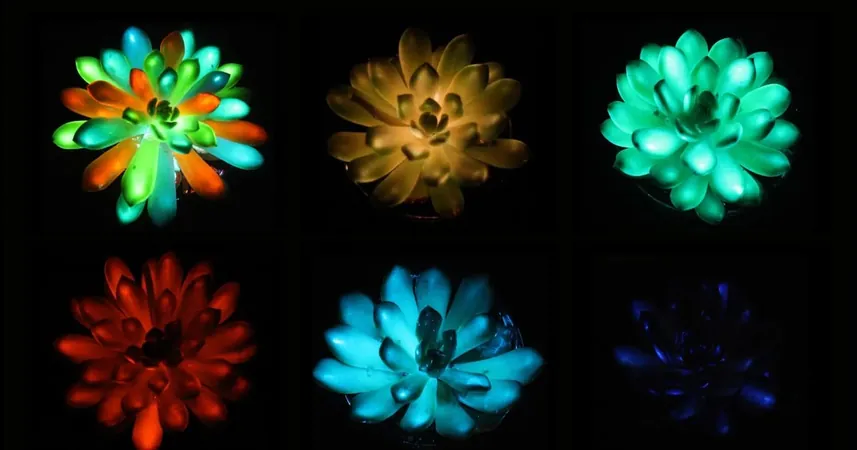
Revolutionary Quantum Sensor Detects Molecular Vibrations with Unprecedented Sensitivity!
2025-08-21
Author: Liam
Unveiling a Breakthrough in Optical Technology
In an exciting development, researchers in the U.S. have unveiled a groundbreaking optical technology capable of detecting the subtle vibrational motions of atoms within molecules. This innovative technique promises to revolutionize disease detection, industrial monitoring, and environmental safety by identifying trace amounts of pollutants and hazardous compounds at room temperature.
Transforming Molecular Vibration Detection
While techniques like Raman and infrared spectroscopy have been used to analyze molecular vibrations, they often depend on weak signals that can be tough to discern in real-world applications. Spotting these faint signals has historically limited their widespread adoption. Enter Ishan Barman and his team at Johns Hopkins University, who aimed to transform the landscape of molecular sensing.
"Instead of simply refining existing methods, we wondered if we could fundamentally change the interaction between light and matter to create an entirely novel sensing approach," he explained. Their vision? Enclose the target molecules within an optical cavity formed by two gold mirrors, intensifying the interactions between the cavity's modes and the molecules' vibrational transitions.
Introducing 'Vibro-Polaritons'
This groundbreaking setup resulted in the emergence of what the researchers have coined "vibro-polaritons"—a unique hybrid of light and matter states that generates distinctive peaks in spectral responses. Through numerical simulations, the team demonstrated how the molecules can split a single cavity mode into two hybridized quantum states.
Real-World Applications and High Sensitivity
Experiments confirmed these hybrid states can indeed be harnessed for practical applications, especially in gauging molecular concentration. Initially, the transmission spectra at low molecule concentrations closely resembled standard cavity modes. However, when concentrations increased—three times lower than traditional infrared spectroscopy requires—the presence of hybrid states became easily detectable.
This striking sensitivity means this cutting-edge technique can be used in scenarios where conventional methods would struggle to deliver reliable results. While the concentrations tested in this initial study were higher than typically encountered in molecular sensing, the team theorizes that optimizing the design of their optical cavity could lead to a significant reduction in detection limits.
A Future Full of Possibilities
As researchers continue to refine this technology, the implications for healthcare, industry, and environmental monitoring are boundless. The potential to swiftly and accurately detect minute changes at a molecular level may ultimately reshape our understanding of both health and the environment, paving the way for advanced diagnostics and innovative solutions to global challenges.









 Brasil (PT)
Brasil (PT)
 Canada (EN)
Canada (EN)
 Chile (ES)
Chile (ES)
 Česko (CS)
Česko (CS)
 대한민국 (KO)
대한민국 (KO)
 España (ES)
España (ES)
 France (FR)
France (FR)
 Hong Kong (EN)
Hong Kong (EN)
 Italia (IT)
Italia (IT)
 日本 (JA)
日本 (JA)
 Magyarország (HU)
Magyarország (HU)
 Norge (NO)
Norge (NO)
 Polska (PL)
Polska (PL)
 Schweiz (DE)
Schweiz (DE)
 Singapore (EN)
Singapore (EN)
 Sverige (SV)
Sverige (SV)
 Suomi (FI)
Suomi (FI)
 Türkiye (TR)
Türkiye (TR)
 الإمارات العربية المتحدة (AR)
الإمارات العربية المتحدة (AR)